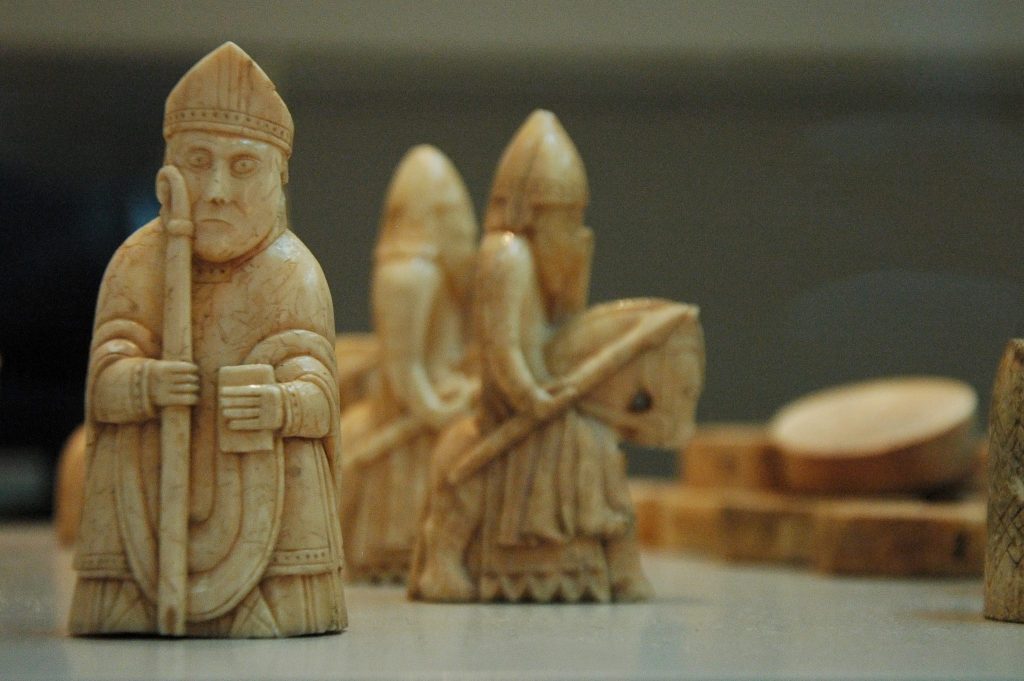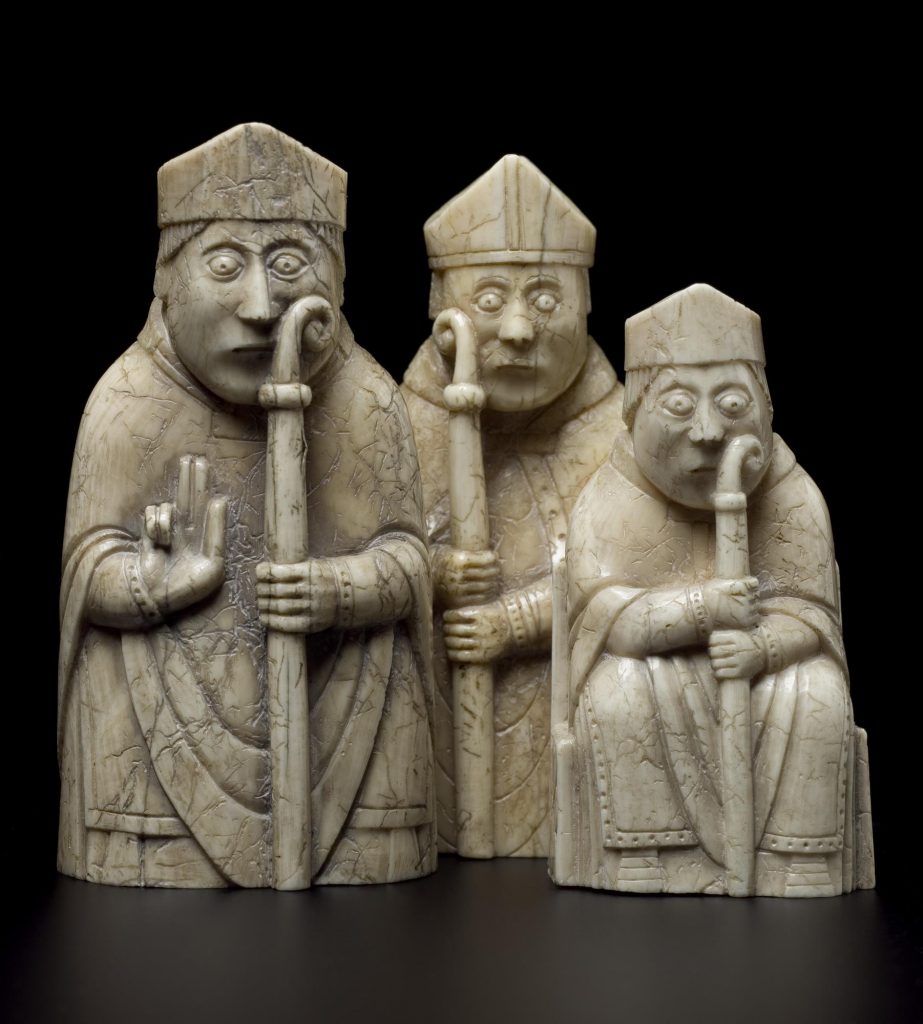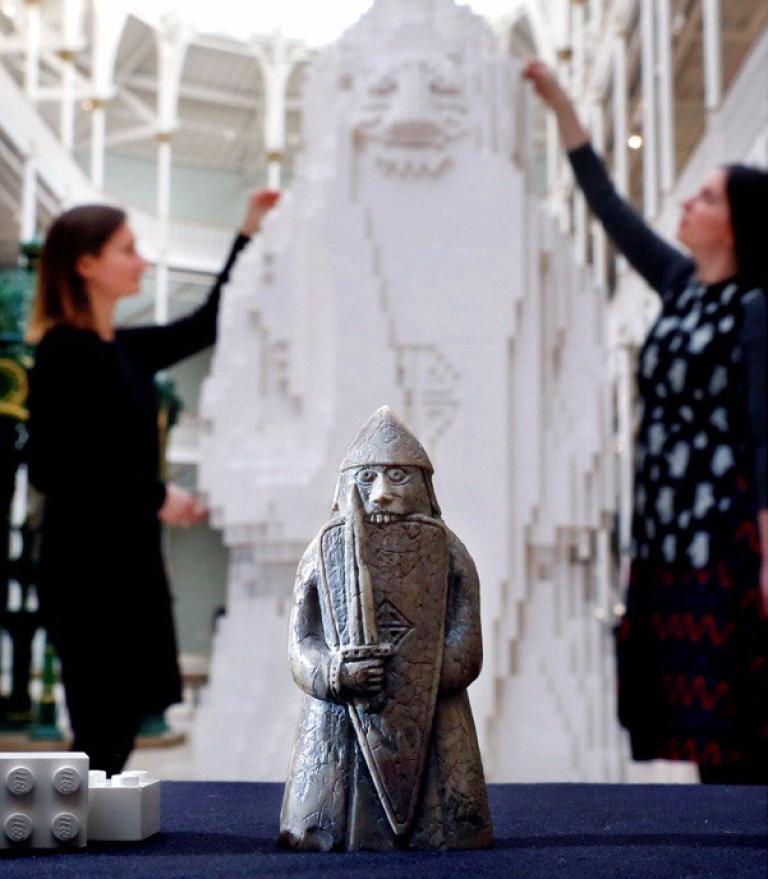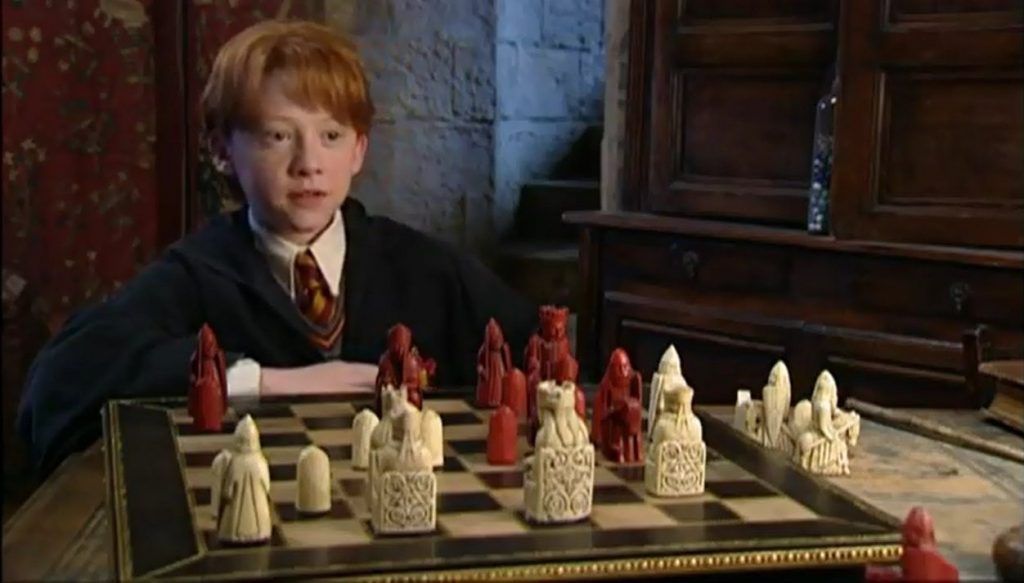While there’s definitely a lot of thinking and logic involved in a chess game, there is also a lot of beauty in it. We want to show you some of the most beautiful chess sets and tell you their story.
And the best way to start is to discuss the Lewis Chessmen.

Discovery and origin
The pieces were found at Uig Bay on the Island of Lewis in Scotland (that’s how they got their name) in 1831. It is one of the few medieval chess sets that survived the marching of time. 82 pieces are now a part of the exhibition of the British Museum in London. The remaining 11 pieces are exhibited at the National Museum of Scotland in Edinburgh.
The scientists of the British Museum think the chessmen were probably made in the medieval capital of Norway, Trondheim in the 12th century.
Similarities and differencies
The types of pieces are almost similar to those in modern chess with few small exceptions.
First of all, the bishop is quite literally the bishop.

When chess was first developing in India, the piece that has later become a bishop was represented by the elephant figure. When the game spread into Europe during Medieval Times, the designs turned to be figurative. We are familiar with modern, abstract-looking bishop pieces so it is quite unusual to see that piece represented as a clerical figure.
Second of all, it might be hard to recognize the rook. It is represented with several warrior pieces, and some of them are chewing their shields!

Sir Frederic Madden – the man who persuaded the Trustees of the British Museum to buy the chess set for the exhibition – called these warriors “warders” in his 1832 research paper, and the name has stuck. He was also the first person to understand that the pieces showing warriors angrily biting their shields were representing berserkers. The berserkers were warriors who fought their enemies furiously and fearlessly, possibly in a drug-induced trance.
In 2016 Warren Elsmore led the team building 6 feet Lego sculpture of this piece at the National Museum of Scotland.

Notability and prominency
This chess set is probably the most famous one.
It was an inspiration for the magic chess in Harry Potter and the Sorcerer Stone movie. Remember the mesmerizing chess set Ron and Harry played with at Christmas? That’s the real-life equivalent of it!

It was also featured in the manga graphic novel “Professor Munakata’s British Museum Adventure” by Hoshino Yukinobu.

And if you want to have one after reading this, the British Museum Gift Shop sells a reproduction for $56!
You can also look at the 3D models of this famous set here.